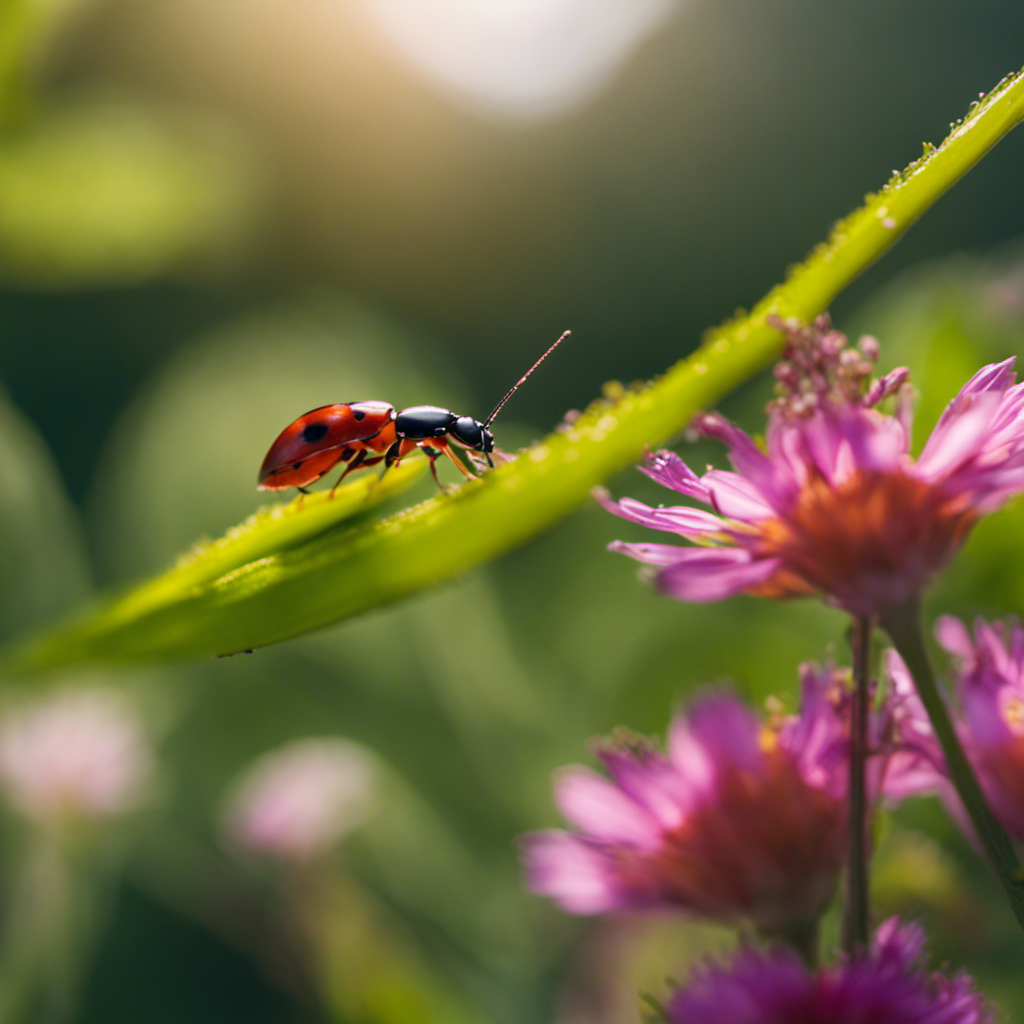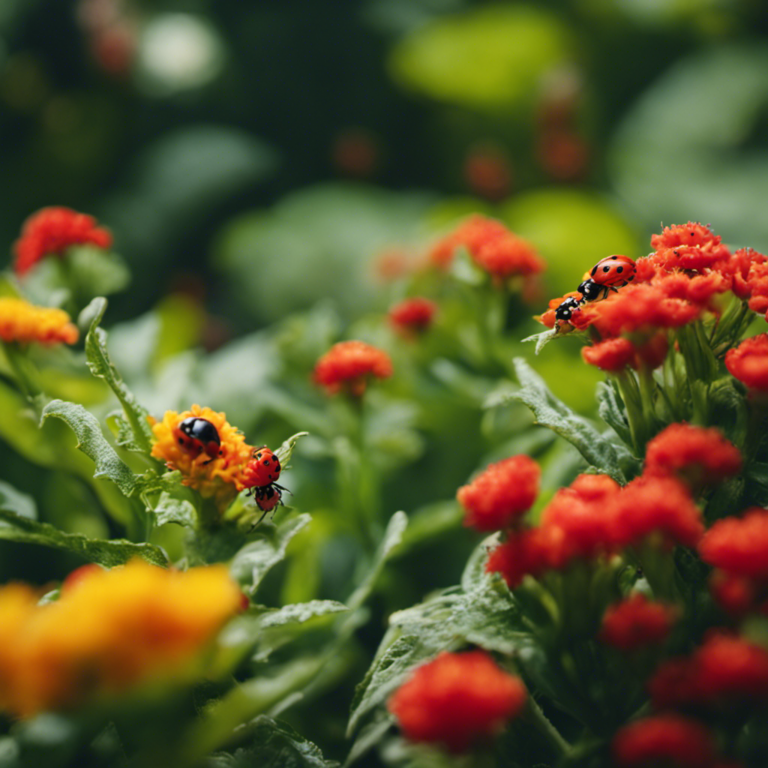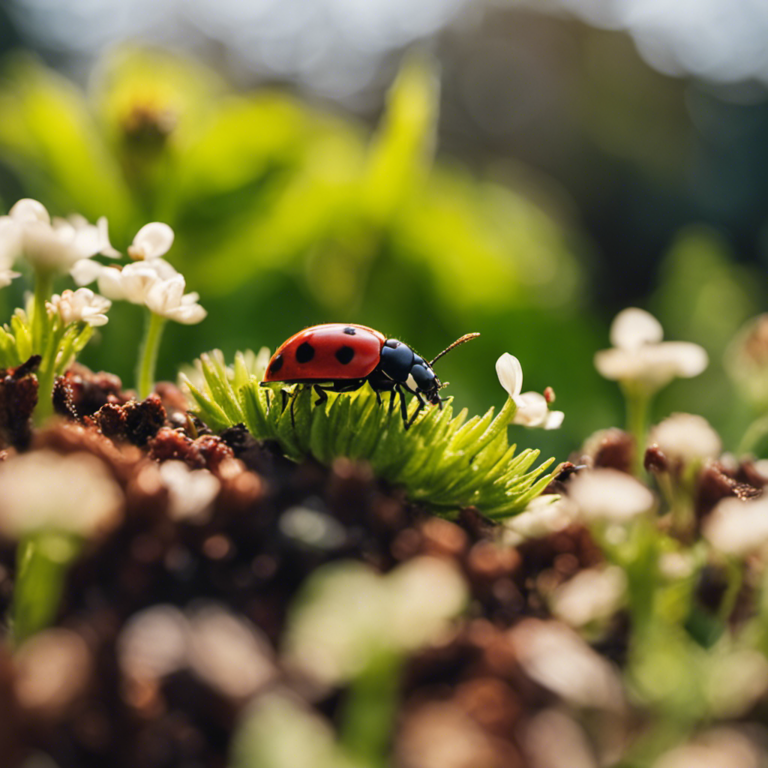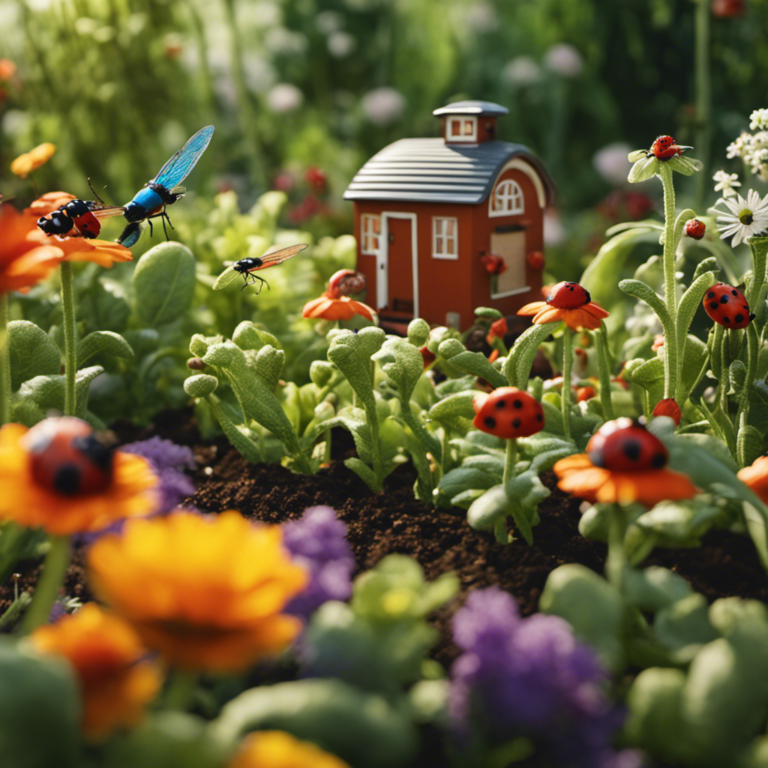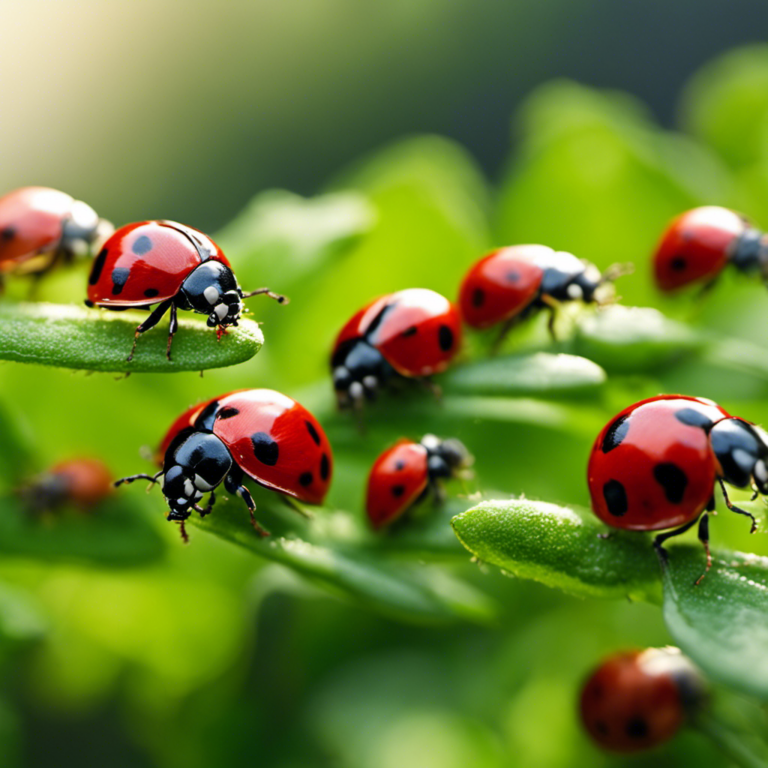Are you looking to create a vibrant and thriving home garden?
Traditional methods of pest control can be harmful to both the environment and your plants. Luckily, there’s a solution that allows you to keep those bothersome bugs away while maintaining the health and beauty of your garden.
This article will provide you with practical tips and detailed information on natural pest control tactics.
From companion planting and beneficial insects to homemade sprays and physical barriers, as well as the importance of crop rotation, you’ll learn how to protect your garden in a natural and effective way.
Key Takeaways
Incorporating natural pest control tactics in your lush home garden is not only practical but also highly effective. By practicing companion planting, attracting beneficial insects, using homemade pest sprays, implementing physical barriers, and practicing crop rotation, you can create a thriving and pest-free garden.
By eliminating the need for harmful chemicals, you can embrace a sustainable and beautiful garden instead. In this article, we will explore the secrets of natural pest control and how you can transform your garden into a haven of growth and harmony.
Companion Planting

Enhancing natural pest control in your home garden can be achieved through the use of companion planting.
Companion planting is a technique where different plants are grown together to mutually benefit each other.
One effective method of companion planting is called succession planting, where crops are strategically planted in a sequence to optimize space usage and extend the harvest period.
For instance, after harvesting slower-growing crops like tomatoes or peppers, you can plant quick-growing crops like lettuce or radishes.
Another technique is intercropping, which involves planting different crops in close proximity to deter pests.
By planting marigolds or nasturtiums alongside vegetables, you can effectively repel aphids and other harmful insects.
Beneficial Insects
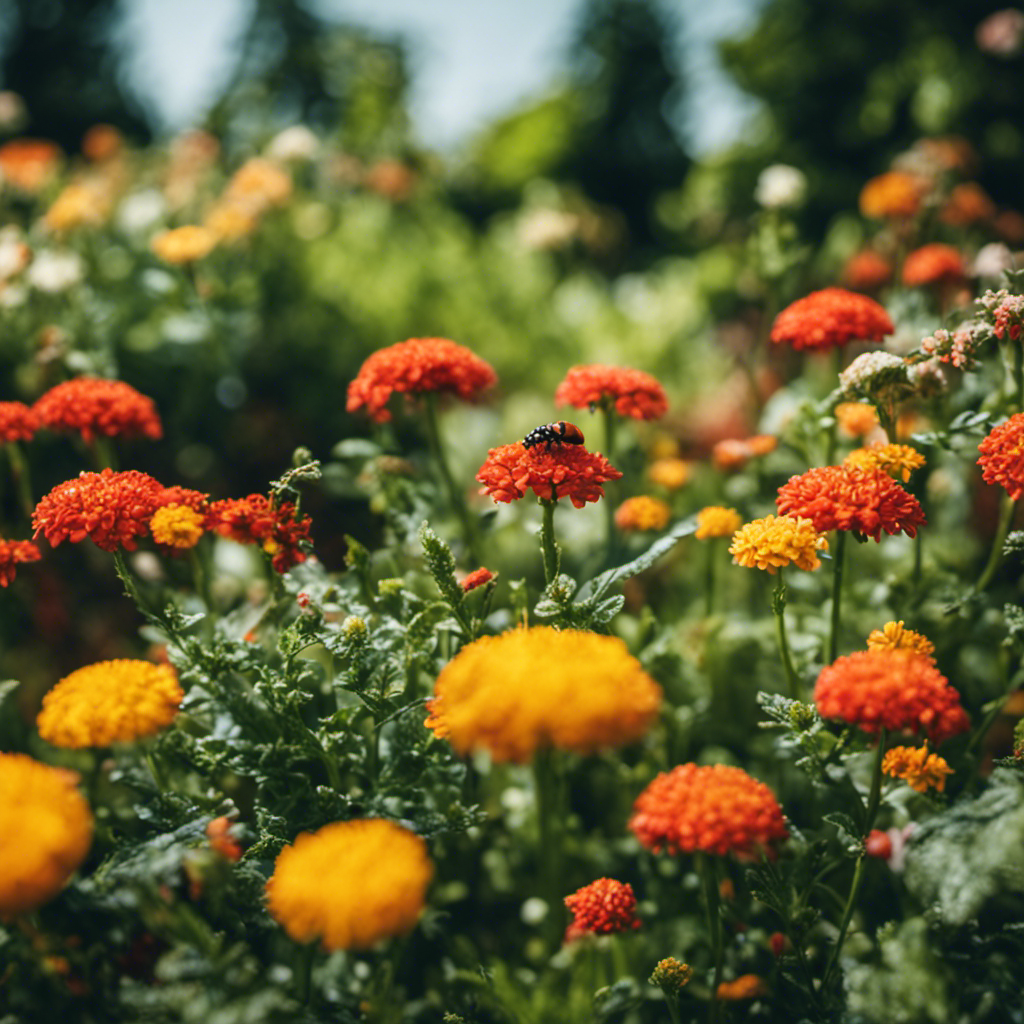
As you continue to improve natural pest control in your home garden through companion planting, another effective method to consider is attracting beneficial insects. These insects play a crucial role in conserving pollinators and managing pests in an integrated way.
By attracting beneficial insects to your garden, you can reduce the need for chemical pesticides and promote a healthy ecosystem. For example, ladybugs feed on aphids and other harmful pests, while bees are essential for pollinating flowers and crops.
To attract these helpful insects, you can plant a variety of flowering plants and herbs that provide food and shelter. Some examples include marigolds, daisies, lavender, and mint.
Additionally, it’s important to avoid using harmful pesticides that can harm beneficial insects.
Homemade Pest Sprays
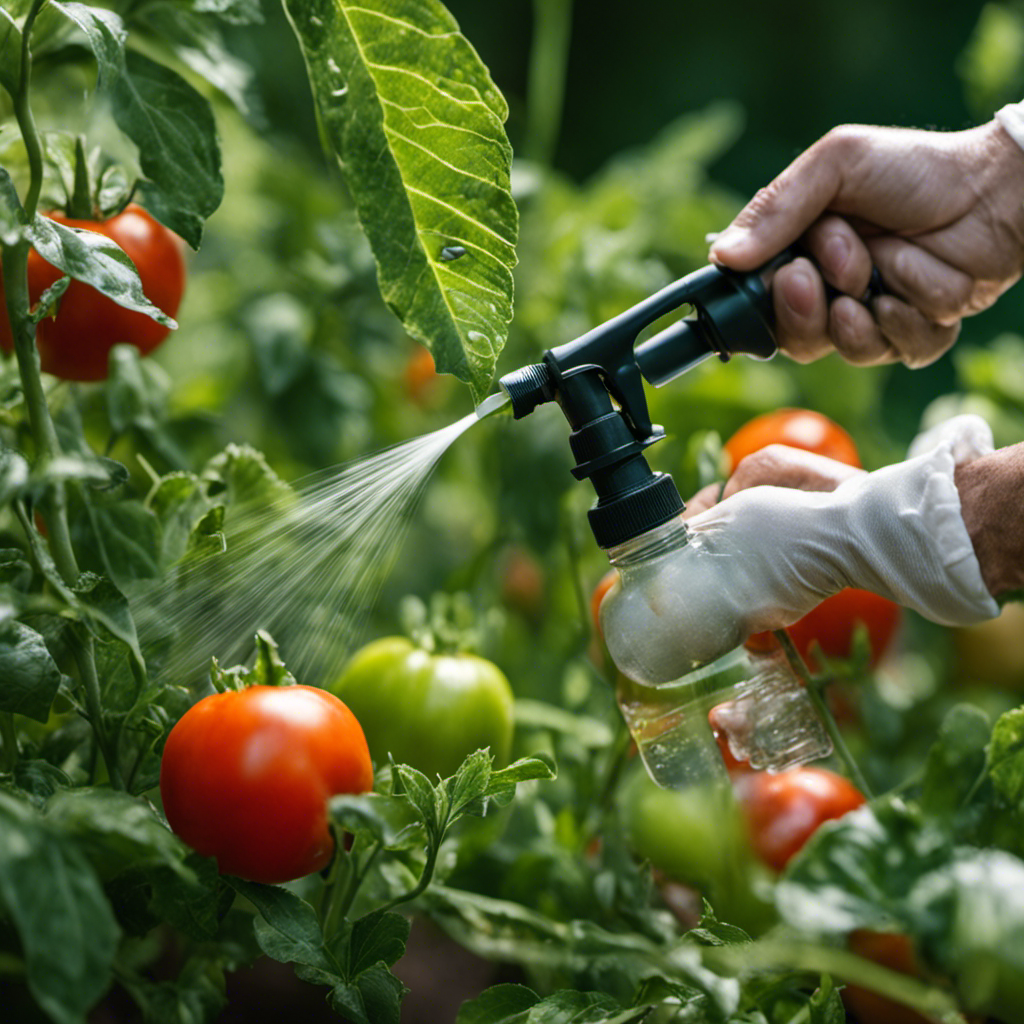
Now let’s explore how you can enhance natural pest control in your home garden by using homemade pest sprays.
Making your own pest sprays isn’t only cost-effective but also allows you to avoid harmful chemicals. Here are some organic alternatives and natural repellents that you can easily create at home:
-
Neem oil spray: You can make a potent insect repellent by mixing neem oil with water and a few drops of dish soap.
-
Garlic and hot pepper spray: Blend garlic cloves and hot peppers with water, strain the mixture, and then spray it on plants to deter pests.
-
Oil spray: Create a suffocating spray for controlling aphids, mites, and other soft-bodied insects by mixing vegetable oil with liquid soap and water.
-
Vinegar spray: Dilute vinegar with water and spray it on plants to repel ants, aphids, and slugs.
-
Eucalyptus oil spray: Combine eucalyptus oil and water to create a natural insect repellent for outdoor plants.
Physical Barriers
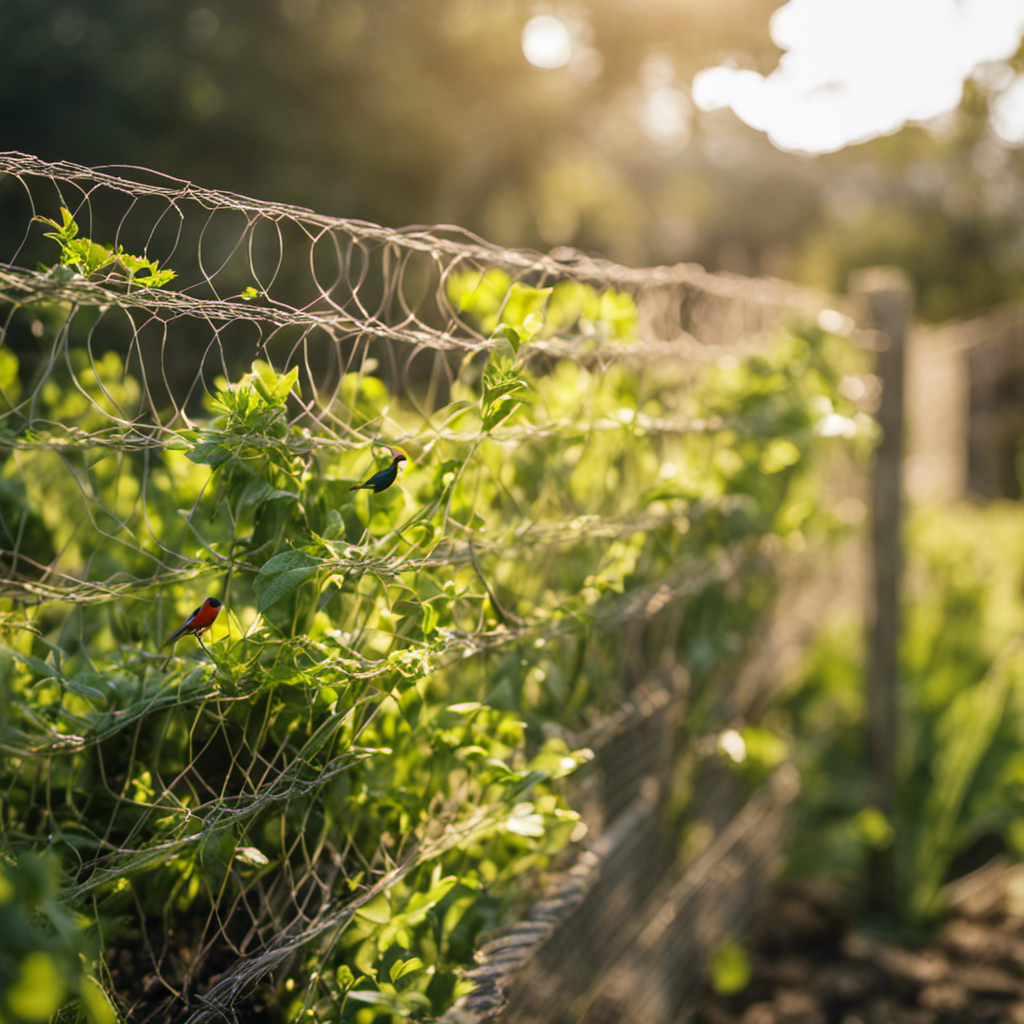
To improve natural pest control in your home garden, you can use physical barriers as a proactive measure against pests. Physical barriers act as a protective shield, preventing pests from reaching your plants. Two effective methods of physical barriers are vertical gardening and raised beds.
Vertical gardening involves growing plants vertically, either on trellises, fences, or walls. This technique maximizes space and provides a barrier that makes it difficult for pests to access your plants. Additionally, vertical gardening improves air circulation and reduces the risk of plant diseases.
Raised beds create a physical barrier by elevating your plants above ground level. By using raised beds, you make it harder for pests, such as slugs and snails, to reach your plants. Raised beds also provide better drainage and allow you to control the soil quality more effectively.
By incorporating these physical barriers into your garden, you can significantly reduce the risk of pest damage and ensure the health and productivity of your plants.
Pros of Vertical Gardening:
- Maximizes space
- Acts as a physical barrier
- Improves air circulation
Cons of Vertical Gardening:
- Requires regular maintenance
- May require additional support for heavy plants
- May limit the variety of plants that can be grown
Pros of Raised Beds:
- Acts as a physical barrier
- Better drainage
- Allows better control of soil quality
Cons of Raised Beds:
- Requires initial setup
- May require additional soil
- May limit the root depth of plants
Crop Rotation
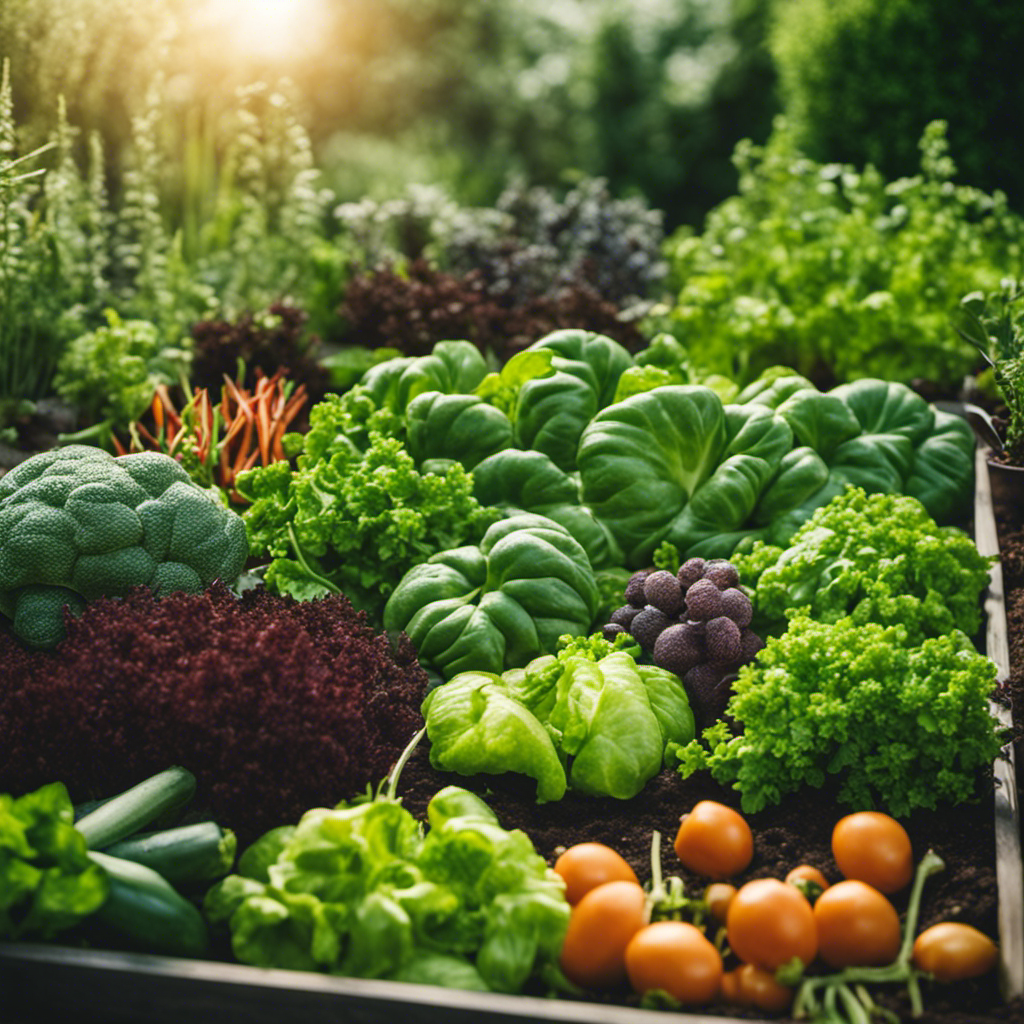
Crop rotation is a simple yet effective technique that can naturally control pests and maintain soil fertility in your home garden. It involves changing the location of crops each growing season, which helps break the life cycle of pests and prevents the buildup of pathogens in the soil. By implementing crop rotation, you can enjoy several benefits.
One of the key benefits of crop rotation is improved soil health. Different crops have varying nutrient requirements, so rotating crops helps balance soil fertility and prevent nutrient depletion. Additionally, it reduces the risk of soil-borne diseases and improves the overall structure of the soil.
Crop rotation also aids in pest control. Certain pests and diseases are specific to particular crops. By rotating crops, you disrupt the habitat and food source of these pests, reducing their population and minimizing the need for chemical pesticides.
Another advantage of crop rotation is the promotion of a diverse microbiome in the soil. This supports a community of beneficial microorganisms, which in turn enhances natural pest resistance and nutrient cycling.
Furthermore, crop rotation can enhance nutrient availability in the soil. For example, legumes have the ability to fix nitrogen, a crucial nutrient, in the soil. By rotating nitrogen-fixing plants with other crops, you can naturally increase soil fertility without relying on synthetic fertilizers.
Lastly, crop rotation allows you to grow pest-resistant varieties of the same crop. By rotating between different varieties that are resistant to specific pests, you can reduce the likelihood of infestations and enjoy your favorite vegetables without the need for chemical interventions.
Conclusion
Incorporating natural pest control tactics in your lush home garden isn’t only practical but also highly effective. By practicing companion planting, attracting beneficial insects, using homemade pest sprays, implementing physical barriers, and practicing crop rotation, you can create a thriving and pest-free garden.
Eliminate the need for harmful chemicals and embrace a sustainable and beautiful garden instead. In this article, we’ll explore the secrets of natural pest control and how you can transform your garden into a haven of growth and harmony.
